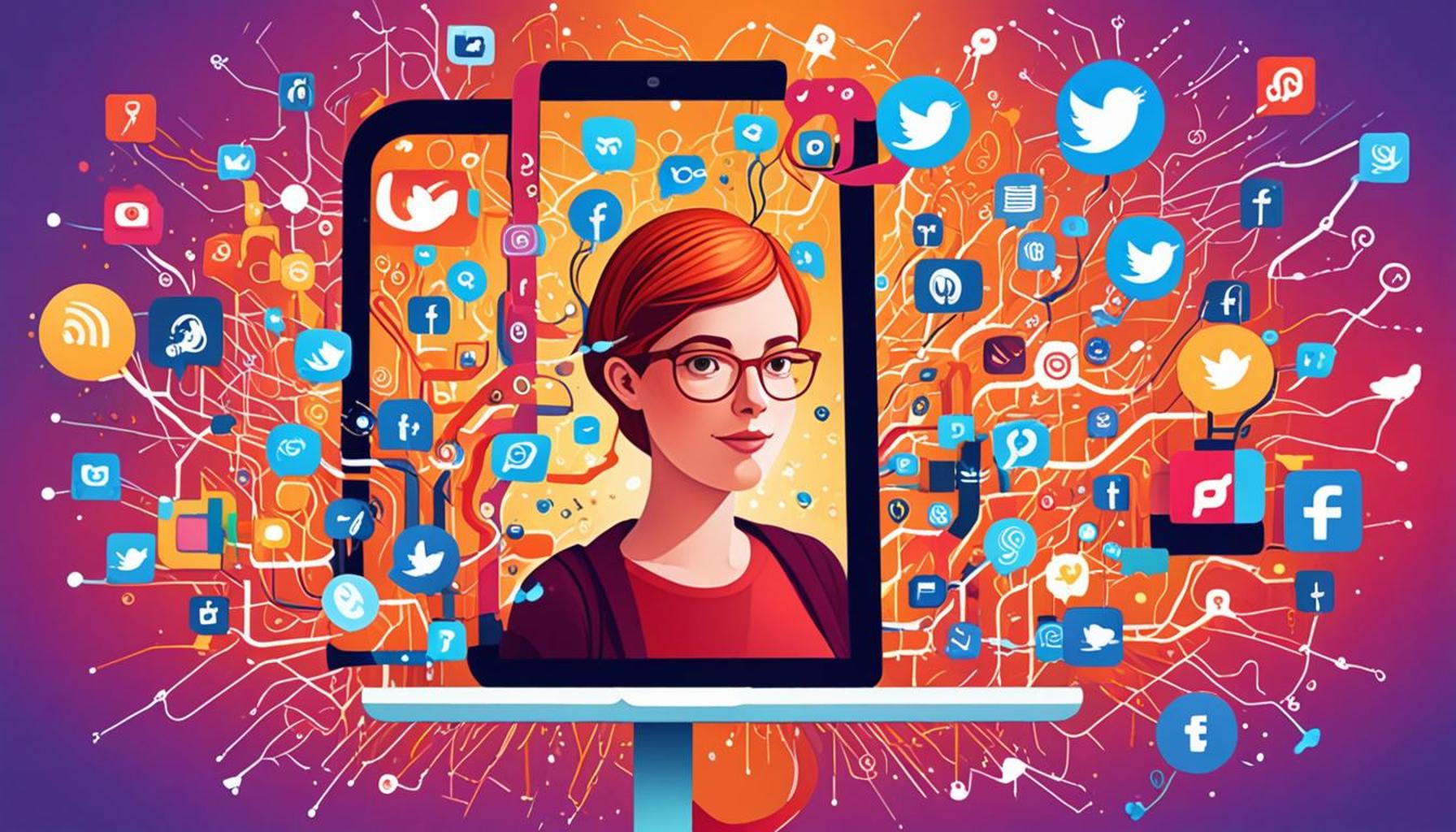The Role of Social Media in Accessing and Information on Government Benefits

The Evolving Role of Social Media in Accessing Government Benefits
In an era where information is at our fingertips, social media platforms have revolutionized the way citizens obtain essential insights regarding government benefits. From unemployment assistance to nutritional programs, these platforms have become pivotal in disseminating information that can significantly affect the lives of many Americans.
Instant Updates Across Platforms
Many government agencies are progressively utilizing social media to provide real-time updates on critical topics such as application deadlines, eligibility criteria, and program changes. For instance, the U.S. Department of Agriculture (USDA) uses Twitter to remind eligible families about the Supplemental Nutrition Assistance Program (SNAP) benefits, ensuring they do not miss out on aid. Similarly, unemployment offices frequently post updates regarding relief efforts during economic downturns, reaching individuals quickly and efficiently. This immediacy helps users stay informed without the need for tedious research through traditional channels.
Fostering Community Engagement
Social media also facilitates community engagement where users can share their own experiences and advice about navigating complex benefits systems. Online groups on Facebook, for example, have emerged as platforms for individuals to discuss issues related to Medicaid, housing assistance, and more. Such communities provide both emotional support and practical guidance, where users can ask questions, share personal stories, and offer tips based on their journeys. This shared knowledge can empower those unfamiliar with navigating these systems, enabling them to take proactive steps toward obtaining necessary assistance.
Enhancing Accessibility
One of the significant advantages of social media is its capacity to improve accessibility. Many Americans access social media primarily through their smartphones, making it easier for them to receive updates on government benefits even without a stable internet connection. This accessibility is particularly crucial for low-income individuals or those in rural areas who may not have access to traditional internet services. By utilizing platforms that are often part of daily routines, government agencies can reach a wider audience and ensure that critical information is distributed more broadly.
The Power of Advocacy and Awareness
The rise of advocacy groups on platforms like Instagram and TikTok has also played a vital role in spreading awareness about lesser-known benefits. Posts that go viral can inform users about specific assistance programs, such as free or reduced-cost healthcare under the Affordable Care Act. For example, accounts dedicated to public health regularly share infographics and success stories about beneficiaries, exposing the myriad of programs available that individuals may not even know they qualify for.
In conclusion, as we explore further how social media continues to reshape the landscape for accessing government benefits, it is evident that these platforms are not just tools for communication but also vital resources for encouraging informed citizenship. The intersection of technology, community support, and government outreach illustrates a powerful evolution in how individuals can empower themselves with knowledge about their rights and resources. Through this exploration, we can better understand the potential for improved public engagement and service accessibility in the digital age.
ADDITIONAL INSIGHTS: Expand your understanding here
Bridging the Gap Between Government Services and Citizens
The intersection of social media and government benefits marks a significant shift in how citizens engage with essential services. Traditional methods of disseminating information, such as printed brochures or formal announcements, often fall short in reaching targeted audiences. In contrast, social media offers a dynamic platform that not only disseminates information but also encourages interaction and feedback from the public. As a result, individuals are increasingly turning to platforms like Twitter, Facebook, and Instagram for vital updates and support concerning government assistance programs.
Real-Time Communication with Government Agencies
Social media has transformed the way government agencies communicate with citizens, providing instant access to information. A study conducted by the Pew Research Center found that approximately 69% of American adults use social media, making it an ideal medium for agencies to share crucial updates. Platforms like Twitter have become essential for agencies to communicate in real-time, especially during emergencies or significant changes in policy. This rapid communication is invaluable for ensuring that individuals are aware of:
- New application processes
- Upcoming deadlines for benefits
- Changes to eligibility requirements
- Instructional content on navigating benefits
For instance, the Centers for Medicare & Medicaid Services (CMS) frequently updates their followers regarding health insurance open enrollment periods and available resources. By harnessing the immediacy of social media, these agencies can mitigate misinformation and ensure that citizens receive timely and accurate information.
A Resource for Finding Local Assistance
In addition to providing updates on benefits, social media serves as a resource for individuals seeking local assistance. Many community organizations and non-profit groups utilize social media to promote their services, such as food banks, housing assistance, and mental health support. By searching for relevant hashtags or joining local groups on these platforms, users can easily discover resources tailored to their needs.
This grassroots level of outreach can be particularly beneficial for individuals from marginalized communities who may not have access to traditional forms of support. For example, a simple search for “#FoodBank” on platforms like Instagram can lead individuals to nearby food pantries and community kitchens, allowing them immediate access to assistance.
Combating Misconceptions and Misinformation
Furthermore, with the rise of social media also comes the proliferation of misinformation regarding benefits, making it crucial for government entities to actively engage on these platforms. By addressing common misconceptions, agencies can clarify the facts surrounding various programs, thereby guiding citizens towards the correct resources. For instance, misconceptions about the availability of benefits like the Supplemental Nutrition Assistance Program (SNAP) can create barriers for eligible individuals, preventing them from applying.
In response, organizations like the Food Research & Action Center (FRAC) are launching campaigns through social media that educate the public about eligibility and how to apply. These initiatives ensure that misinformation does not hinder access to necessary support.
As we delve deeper into how social media impacts access to government benefits, it becomes evident that these platforms have not only become pivotal in sharing information but have also helped forge connections between citizens and the resources they desperately need. This accessibility changes the landscape of how assistance is sought and received, ultimately empowering individuals to take informed actions regarding their entitlements.
The Role of Social Media in Accessing Information on Government Benefits
In today’s digital age, social media platforms serve as powerful tools for enhancing public awareness about government benefits. They play a crucial role in disseminating information quickly and effectively, making services more accessible to the general public.
| Advantage | Description |
|---|---|
| Increased Accessibility | Social media platforms enable users to access information anytime and from anywhere, providing unparalleled access to government benefits. |
| Community Support | Online forums and social networks foster discussions, helping users share experiences and tips on navigating government benefits. |
| Real-Time Updates | Government agencies can provide immediate updates on benefit changes or new programs through social media, ensuring the public stays informed. |
| Targeted Outreach | Utilizing data analytics, social media can help target specific demographics that may qualify for particular benefits, enhancing outreach efforts. |
Moreover, social media enhances engagement between citizens and government, transforming the communication landscape into a two-way dialogue. This allows for feedback and suggestions from users, which can lead to improvements in benefits administration.
As organizations continue to leverage social platforms, understanding their impact on accessing government benefits becomes increasingly important. Investigating further into how social media can improve your access to essential services could provide significant advantages for those seeking assistance.
LEARN MORE: This related article may interest you
Enhancing Engagement and User Experience
The realm of social media not only serves as a conduit for information but also fosters a sense of community and engagement among users seeking government benefits. By leveraging the interactive nature of social media platforms, agencies can create dynamic content that encourages user participation and feedback. This engagement goes beyond simple notifications; it allows individuals to voice their concerns, ask questions, and share their experiences, thereby fostering a community that is informed and empowered.
Utilizing Multimedia Content for Better Understanding
Multimedia content, such as videos, infographics, and live Q&A sessions, has become an effective strategy for enhancing the understanding of complex government benefits programs. For example, the Social Security Administration (SSA) has successfully utilized platforms like YouTube to create informative videos that explain eligibility requirements and application procedures in a user-friendly manner. This approach allows users to absorb information quickly and efficiently, directly addressing the confusion often surrounding government benefits.
Moreover, engaging visual content can be shared easily, creating a ripple effect as users repost and share information within their own networks. This amplifies the reach of educational materials, ensuring that vital information circulates widely across different demographics and communities. In this way, social media acts not just as a tool for dissemination but as a medium that strengthens community ties and collective knowledge surrounding government assistance.
The Role of Influencers and Advocates
The emergence of social media influencers and advocates has also changed the landscape of information accessibility regarding government benefits. Individuals with a substantial online following can help demystify processes, share personal stories, and make complex legal language more relatable. Their authentic narratives can serve as powerful testimonials, helping to build trust and dispel fears that often accompany the pursuit of government aid.
For instance, various influencers have taken to platforms like Instagram and TikTok to conduct informational series on navigating systems like unemployment benefits or Medicaid applications. By breaking down the steps in engaging formats, they make information accessible to younger generations who may otherwise overlook traditional news outlets. The impact of influencers on public education around benefits cannot be understated, as they often have established rapport with their audience, making their messages resonate more profoundly.
Expanding Partnerships for Broader Outreach
Finally, partnerships between government agencies and social media platforms or non-profits are pivotal in maximizing outreach efforts. Collaborative campaigns that utilize targeted ads on platforms like Facebook and Instagram can focus on reaching specific demographics that may benefit from particular programs. For example, Facebook’s “Get Help” feature allows users to connect directly with local resources, enabling better access to assistance tailored to the individual needs of the community.
Additionally, initiatives such as the Digital Divide Partnership aim to ensure that low-income households have access to the internet, thereby enhancing accessibility to government benefits. This concept hinges on a critical understanding: to fully leverage social media for information dissemination, barriers in technology access must first be addressed.
As social media continues to evolve, its role in accessing information on government benefits will likely expand, driving innovation in communication strategies and community engagement. The future of public assistance hinges, in part, on how effectively agencies can adapt to the digital landscape, ensuring that every citizen has equitable access to the support they need.
RECOMMENDED: Check out this similar article
Conclusion
In an era where digital communication has become the norm, social media plays an indispensable role in facilitating access to information about government benefits. The power of social media platforms not only lies in their capacity to disseminate information quickly but also in their ability to foster community engagement and understanding. By utilizing multimedia content, government agencies can present complex programs in an easily digestible format, thereby empowering individuals to navigate the often confusing landscape of government assistance.
Moreover, the influence of social media personalities has transformed the way these benefits are communicated. With relatable narratives and engaging formats, influencers can demystify intricate processes, making crucial information accessible to wider audiences, particularly younger generations. The partnership between government entities and these social media platforms enhances outreach efforts, ensuring that targeted campaigns resonate effectively within diverse communities.
As we look towards the future, it is vital to recognize the challenges that remain, particularly in bridging the digital divide to ensure equitable access for all citizens. Addressing these challenges will be essential for maximizing the potential of social media as a tool for assistance. By continuing to innovate communication strategies and reinforcing community ties, we can ensure that every American has the opportunity to access the vital resources they need. Ultimately, the role of social media in navigating government benefits extends far beyond communication; it cultivates an informed society where citizens actively engage with their rights and resources. Exploring these avenues offers a promising path toward a more inclusive framework for public assistance.



